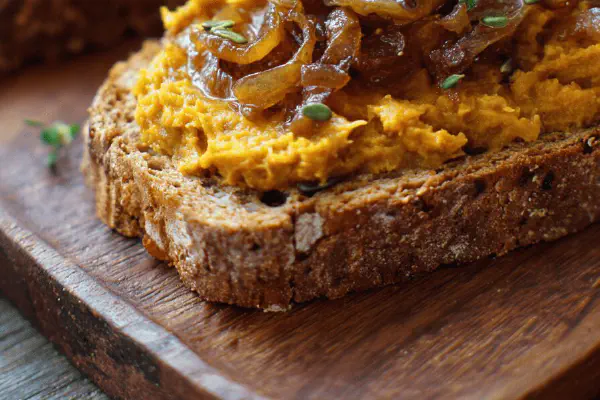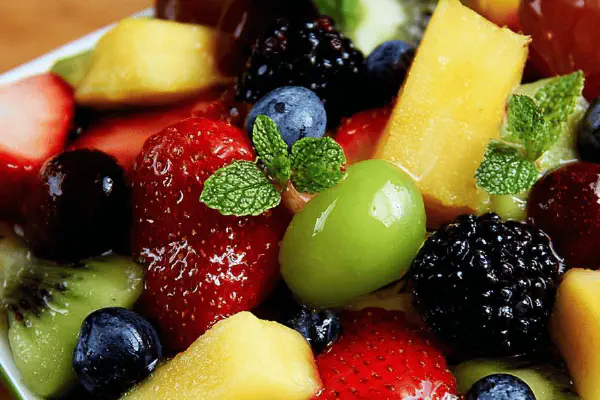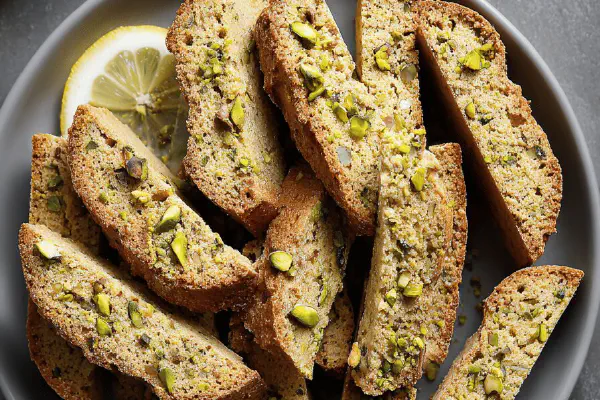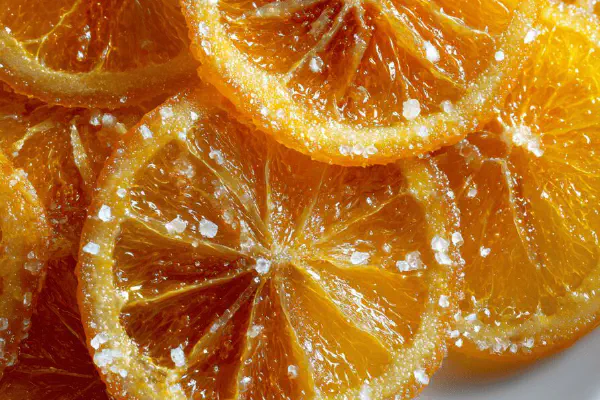Reinvented Samosas Without Frying
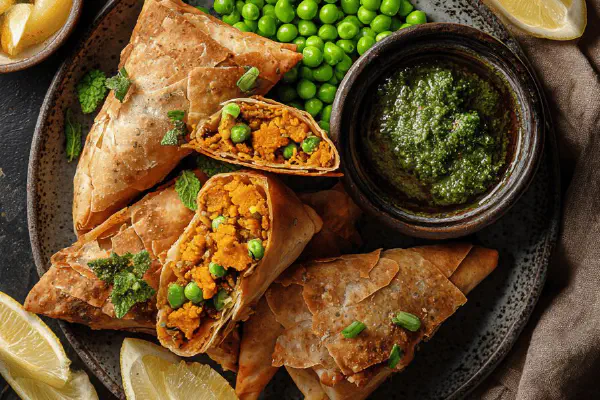
By Emma
Certified Culinary Professional
Ingredients
- 2 medium sweet potatoes, peeled and cubed
- 1 small eggplant, cubed
- 1 large onion, chopped
- 2 cloves garlic, minced
- 2 tbsp vegetable oil, plus more as needed
- 1 tbsp curry powder
- 1 tsp cumin powder
- 1/2 tsp smoked paprika
- 1 cup water
- 1/2 cup frozen green peas, thawed
- 1/4 cup chopped fresh cilantro
- 8 whole wheat lavash breads, cut in half
- Sauce:
- 6 tbsp tamarind chutney
- 2 tbsp water
- 2 tbsp fresh lime juice
- Mild chili sauce, optional
About the ingredients
Method
- Heat a large nonstick skillet over medium-high heat. Add 2 tbsp oil. Toss in sweet potatoes, eggplant, onion, garlic. Cover quickly. Let sweat for about 6-7 minutes, stirring a couple times until veggies soften, edges golden. Don’t rush or veggies turn mushy.
- Sprinkle curry powder, cumin, smoked paprika over the pan. Stir vigorously for 30 seconds. Aroma should bloom, spices toast just right. Splash in water. Cover. Simmer gently. Wait until liquid vanishes, vegetables fully tender — usually 16–18 minutes. Watch carefully; no soggy mess.
- Take off heat. Mash roughly with wooden spoon or potato masher. Leave some chunky bits for texture. Fold in green peas, fresh cilantro. Salt and pepper to balance — think bright, vibrant, not flat. Set aside 15 minutes to cool and let flavors marry.
- Lay out lavash halves on clean surface. Spoon about 3 tbsp filling near the wide edge of each half. Fold corners inward over filling, roll into half-moon shape. Don’t seal completely at ends — venting keeps wrapper crisp without oil soaking in.
- Clean skillet or use same pan wiped dry. Medium heat, drizzle little oil, just enough to coat bottom. Place samosas seam side down. Press lightly for even contact. Cook about 3 minutes each side or until crisp, golden brown. Listen for quiet sizzle, not sputtering — that indicates right oil temp.
- Prepare dipping sauce. Whisk tamarind chutney with water, lime juice. Adjust tang by tasting. Add mild chili sauce if you dare, but keep balanced. Serve samosas warm, encourage guests to dip generously.
- Notes — shortcuts: roasted sweet potatoes instead of stovetop, but lose some moisture control. Eggplant softens faster; cut into larger cubes if worried about mush. Do not overlap samosas while cooking; crispness ruined in a heartbeat. If lavash tears, patch with a little water and pinch edges firmly.
- Swap lavash for gluten-free wraps for gluten intolerance, keep folding gentle. Peas optional; can sub with diced carrots or corn. If too dry, a splash of lemon water brightens filling immediately without heavy sauce.
- Rest time critical; flavors deepen, filling firms to handle easily. No rest means runny failure. This method learned after too many sloppy samosas on first tries.
- Stove heating varies — adjust oil heat and timing by watch and sound, no strict timer. Feel the pan heat with the back of your hand, smell curry release — that’s prime cooking time.
Cooking tips
Chef's notes
- 💡 Heat skillet well before adding oil—too cold and veggies stew, too hot and you scorch without softening. Covering speeds sweating but watch liquid carefully; overdo and filling waters down. Timing’s a feel thing. I sniff spices blooming, hear gentle sizzle, not hard fry noise. Mushy eggplant? Cut bigger cubes, let them soften slower. Dry filling? Splash lemon water after cooking, brightens instantly without soggy mess.
- 💡 Folding lavash halves needs care. Corners first to lock filling tight. No seal at ends; vents stop sogginess by letting steam escape. If wrap tears, damp cloth patch fixes quick. Use just enough oil in skillet, thin coating only, or samosas become greasy and heavy. Half-moons need gentle pressing on pan, even cooking both sides. Listen for soft sizzle—too hot means burnt edges, too cool means dull crust.
- 💡 Add peas last after mashing to keep pops of color and bright sweetness. Overmash and you lose texture — I like chunky bits still. Spice toast step critical: quick stir, 30 seconds max, smell changes then liquid splash in. Don’t rush—spices bitter if overcooked. Cooler filling rests well; no rest, filling runs. Leaving it 15 minutes tightens mix and melds flavors, trust sensory cues on firmness before folding.
- 💡 Sauce is flexible. Tamarind chutney base with water and lime juice adjusts acidity. Mild chili sauce optional—use sparingly or sauce overtakes. Homemade? Swap chutney for tamarind paste mixed with jaggery or honey. Taste often. If too sour, add honey. Too flat, extra lime juice. Keep stirring during assembly to balance acidity with filling’s earthy notes. Dip hot samosas, encourage generous scoops for contrast.
- 💡 If filling too wet, drain excess water or mix in gram flour (chickpea) — binds better than regular flour, no off taste. Eggplant releases moisture fast—watch simmer time carefully. Don’t overcrowd pan; steam trapped ruins crisp edges. Cool leftover samosas in single layer so crust stays crisp, reheat covered in skillet a few minutes to bring back crunch. Swap lavash for gluten-free wraps but expect more fragile folding; handle gently.
Common questions
How to avoid soggy filling?
Drain veggies well after simmer. Eggplant releases moisture fast so bigger cubes help slow soften. Add gram flour if too wet. Rest filling to firm after cooking. No rest means sloppy, runny mess. Cover pan but watch liquid vanish, too much ruins crispness.
Can I use other veggies?
Yes, carrots or corn swap for peas. Potatoes replaced with sweet potato for creaminess. Eggplant moisture variable so adjust cooking time. Avoid zucchini here, gets watery. Swap cilantro with parsley or basil if allergies, but flavor shifts. Keep veggies diced similarly for even cooking.
Best way to fold lavash?
Halve lavash, spoon filling near wide edge. Fold corners in first to lock filling. Roll into half-moon shape. Don’t seal ends, vents prevent soggy wrap. If lavash tears, patch with little water and pinch edges tight. Keep fold snug but not too tight or filling bursts out.
Storage and reheating?
Store cooled samosas in single layer to avoid condensation, crisp stays longer. Refrigerate in airtight container up to 2 days. Reheat in skillet with light oil on medium, cover briefly to warm through, then uncover to crisp edges again. Microwave softens crust fast, avoid if possible.
